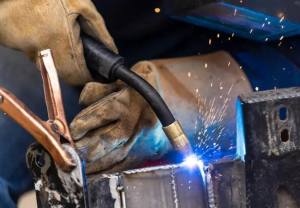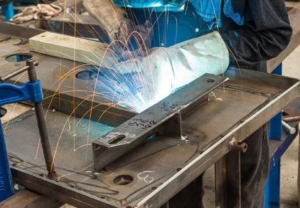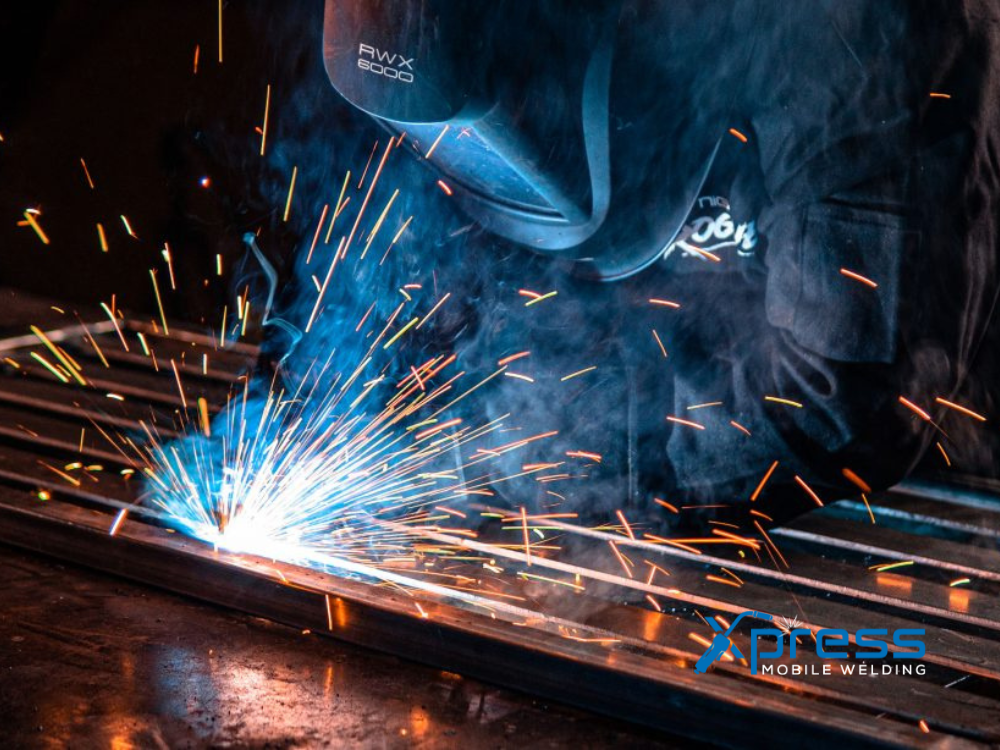How Strong is Mig Welding – MIG, TIG, and Stick Wire Welding
Mig welding is a process that uses a continuous wire feed to join metals together. It’s often considered the easiest type of welding to learn, and it’s commonly used in auto body repair and manufacturing. Mig welding is most effective when joining thin sheets of metal, and it produces a strong, consistent weld. If you’re considering mig welding for your next project, here’s what you need to know about the process.
Before tackling any welding project, make sure you have the proper safety apparel and that any potential fire hazards are removed from the welding area.
Is MIG welding stronger than stick weld?
 Welding is a process of joining two pieces of metal together by melting them and adding a filler material. There are several different welding processes, including MIG and stick welding. Both have their own advantages and disadvantages, but which one is stronger? MIG welding is typically used for thinner metals, while stick welding is better suited for thicker metals. When it comes to strength, MIG welding generally produces a stronger weld than stick welding.
Welding is a process of joining two pieces of metal together by melting them and adding a filler material. There are several different welding processes, including MIG and stick welding. Both have their own advantages and disadvantages, but which one is stronger? MIG welding is typically used for thinner metals, while stick welding is better suited for thicker metals. When it comes to strength, MIG welding generally produces a stronger weld than stick welding.
This is because the filler material used in MIG welding penetrates the metal more deeply, resulting in a stronger bond. Stick welding can also produce strong welds, but it is more difficult to control the depth of penetration, making it more likely that the weld will be weaker. For this reason, MIG welding is generally considered to be stronger than stick welding. Depending on the type of MIG machine you are using, there may be different requirements as far as your skill level, knowledge, and type of weld.
MIG welding can be performed with different types of metal, so long as the surfaces are clean. MIG welds can be used for thin metals, including aluminium, brass, carbon steel, copper, magnesium, mild steel and stainless steel. However, MIG welding is not ideal for thicker metals, unlike stick welding, which can fuse thicker metals.
Why is stick welding stronger than mig? – Stick Weld
To fully determine the differences between MIG and stick welding, we will compare them over some key parameters. Stick welding has been the dominant and most popular method of welding for many years.
Stick welding is a type of welding that uses an electrode to create an arc between the metal and the electrode. The arc then melts the metal, which allows the two pieces to be joined together. Mig welding, on the other hand, uses a wire that is fed through a gun. The wire then melts and joins the two pieces of metal together. So, why is stick welding stronger than mig welding? Stick welding produces a stronger weld because it creates a thicker bead of weld. Mig welding, on the other hand, produces a thinner bead of weld. In addition, stick welding is less likely to produce porosity in the weld, which can weaken the joint. Mig welding is also more likely to produce slag, which can also weaken the joint. As a result, stick welding is generally considered to be a stronger type of weld than mig welding.
What Is Stick Welding? – MIG welding strength test
Stick welding is easy to learn, meaning that good quality welds can be made by someone with relatively little experience. Stick welding, also known as manual metal arc welding or MMA welding, is a type of welding that uses an electrode, or “stick,” to create an electrical arc between the electrode and the metal. The arc melts the metal, which fuse together to create a weld. Stick welding is a versatile process that can be used on a variety of metals, including mild steel, stainless steel, aluminum, and cast iron. It is commonly used in construction and manufacturing. The main advantage of stick welding is that it can be used in a wide range of settings, both indoors and outdoors.
Stick welding is also relatively easy to learn, making it a popular choice for beginner welders. However, stick welding does have some disadvantages. The main downside is that it can be more difficult to produce high-quality welds with stick welding than with other methods such as MIG or TIG welding. In addition, stick welding produces more fumes and spatter than other methods. Despite its drawbacks, stick welding remains a widely used method for both home projects and industrial applications. If you’re interested in learning how to weld, stick welding is a great place to start.
MIG vs. Stick Welding – Which is Better?
MIG welding and Stick welding are both common methods of joining metals together. But which one is better? The answer may depend on the specific application. MIG welding offers a much higher margin of error compared to stick welding where you do not get many options for making precise calculations.
- MIG welding, or Metal Inert Gas welding, uses an electrode that is fed through a wire-feed gun. The electrode is coated with a flux that helps to shield the weld from atmospheric contamination. MIG welding is generally faster than Stick welding, and it can be used on thinner materials. If the weld is too fast, the filler metal will not be able to reach the weld pool. MIG welds also tend to be smoother and more aesthetically pleasing. However, MIG welding can be more difficult to master, and it may not be appropriate for all applications.
- Stick welding, or Shielded Metal Arc Welding, uses an electrode that is covered with a flux that burns away as the weld is made. Stick welding is generally easier to learn than MIG welding, and it can be used in a wider range of situations. Stick welds may not be as smooth as MIG welds, but they can be just as strong. So, which is better – MIG or Stick welding? The answer may depend on the specific application.
- Both types of welding machines produce a high quality of welding finish if you know how to finish up the surface using the right welding equipment.
- Both the bare wire for MIG and the rod for stick have a 70, which represents the 70,000 psi tensile strength.
Is MIG stronger than TIG?
When it comes to welding, there are two main methods: MIG and TIG. Advantages and disadvantages come with both using a contractor or hiring an employee, but which option is more beneficial for your company?In general, MIG welding is stronger than TIG welding. This is because MIG welding requires uses a filler material that helps to add strength to the weld, whereas TIG relies solely on the heat of the arc to fuse the metals together. However, there are some circumstances where TIG welding may be stronger than MIG welding.
MIG vs. Flux Core Welding
For example, if you are welding two dissimilar metals (such as aluminum and steel), TIG may be a better option because it won’t require the use of a filler material that could cause problems. Ultimately, it’s important to choose the right welding method for the job at hand. But if you’re looking for a generally strong weld, MIG is usually the way to go.
What is the strongest welding type?
The three most common types of welding are oxyacetylene welding, arc welding, and mig welding.
- Oxyacetylene welding is the oldest and most basic type of welding. It involves using a flame to heat the metals until they melt and then cooling them so that they fuse.
- Arc welding is more complex than oxyacetylene welding, but it produces stronger welds. In arc welding, an electrical current is used to create a hot arc between the metal pieces. The heat from the arc melts the metal, and the molten metal cools and fuses the two pieces together.
- Mig welding is similar to arc welding, but it uses a continuous wire feed to create the arc. This makes mig welds stronger and more resistant to cracking than arc welds.
Ultimately, the strongest type of welding depends on the materials being welded and the desired result. However, mig welds are generally considered to be the strongest type of welds.
Is MIG welding good for structural?
 MIG (metal inert gas) welding is a type of arc welding that uses a continuously fed wire. It is well suited for use on thin materials, and can be used on a variety of metals, including aluminum and stainless steel. MIG welding is often used for structural applications such as beams and columns. One advantage of MIG welding is that it can be used on a variety of materials, both thick and thin. This makes it ideal for use in a wide range of applications, including structural ones. Additionally, MIG welding produces very little spatter, allowing for a cleaner weld. And because the operator does not have to stop and change wires as with other types of welding, MIG welding can be faster and more efficient. There are some disadvantages to MIG welding as well. One is that it can be difficult to produce consistent results due to the nature of the process. Additionally, MIG welds are not as strong as some other types of welds, making them less ideal for use in high-stress applications. However, overall MIG welding is a good choice for many applications, especially those where speed and versatility are important considerations.
MIG (metal inert gas) welding is a type of arc welding that uses a continuously fed wire. It is well suited for use on thin materials, and can be used on a variety of metals, including aluminum and stainless steel. MIG welding is often used for structural applications such as beams and columns. One advantage of MIG welding is that it can be used on a variety of materials, both thick and thin. This makes it ideal for use in a wide range of applications, including structural ones. Additionally, MIG welding produces very little spatter, allowing for a cleaner weld. And because the operator does not have to stop and change wires as with other types of welding, MIG welding can be faster and more efficient. There are some disadvantages to MIG welding as well. One is that it can be difficult to produce consistent results due to the nature of the process. Additionally, MIG welds are not as strong as some other types of welds, making them less ideal for use in high-stress applications. However, overall MIG welding is a good choice for many applications, especially those where speed and versatility are important considerations.
Is Stick Welding Easier than MIG?
Both Stick and MIG welding offer unique advantages for welders. Stick welding, also known as Shielded Metal Arc Welding (SMAW), is a popular welding process that is well-suited for a variety of applications. MIG welding, on the other hand, is a process that is typically used for thin metals. So, which welding process is easier to learn? When it comes to stick welding, the biggest advantage is that it can be used on a variety of materials, including thicker metals. This makes it a versatile welding process that can be used in a variety of applications. MIG welding, on the other hand, is typically limited to thinner metals.
Another advantage of stick welding is that it is less sensitive to drafts and wind than MIG welding. This makes it ideal for outdoor applications. So, Is Stick Welding Easier than MIG? While both welding processes have their advantages, stick welding is generally considered to be the easier of the two to learn. This is due to its versatility and relative simplicity.
The stick welder can be used indoors and outdoors as well as in drafty areas and confined spaces. However, regardless of which welding process you choose to learn, be sure to follow all safety precautions and practice in a well-ventilated area.
How hard is MIG welding?
The answer to this question depends on a number of factors, including your level of experience, the type of metal you’re working with, and the thickness of the material. If you’re a beginner, MIG welding can be challenging, as it takes time to get the hang of controlling the welding gun and keeping a steady hand. However, with practice, it becomes easier. The hardest part of MIG welding is usually dealing with thicker metals, as they require more heat and can be difficult to control. However, thin metals can also be challenging, as they can melt quickly and cause the weld to be uneven. Ultimately, the difficulty of MIG welding varies depending on the situation. With practice and experience, it can become relatively easy.
How to Make Strong MIG Welds – A Beginners Guide
There are a few things you need to do to make strong MIG welds. First, you need to make sure that you have a good, clean metal surface to work with. This means removing any rust, paint, or debris that might be on the metal. Next, you need to position your welding torch so that the tip is pointing slightly downward. This will help the weld puddle stay in place. Finally, when you start welding, use a slow and steady motion. Don’t try to hurry through it. If you take your time and make sure each weld is strong, you’ll end up with a much better overall result.
Is a MIG welder easy to use?
When it comes to welding, MIG welders are some of the most popular options on the market. They are relatively easy to use, and they can be used for a wide range of projects. However, before you purchase a MIG welder, it is important to understand how they work. MIG welders use an electrode that is fed through a wire feeder. The electrode is then used to create an arc between the metal being welded and the ground. This arc heats up the metal, which melts and joins the two pieces together. MIG welders are often used for welding aluminum and other thin metals. If you are looking for a welder that is easy to use and versatile, a MIG welder is a good option.
Conclusion
So, how strong is mig welding? Pretty darn strong. In fact, it’s one of the most popular welding methods for joining metals together because it produces a high-quality weld. If you’re looking to do some welding yourself, be sure to give mig welding a try – you won’t be disappointed with the results. Have you tried mig welding before? What did you think? Let us know in the comments below!
References:
What is the Difference Between Stick Welding and MIG?

